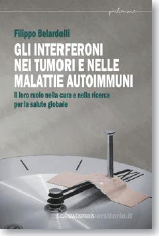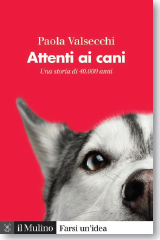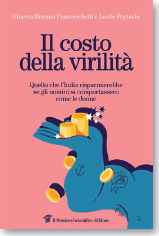BOOK REVIEWS, NOTES AND COMMENTS

GLI INTERFERONI
NEI TUMORI E NELLE
MALATTIE AUTOIMMUNI
Il loro ruolo nella cura e nella ricerca per la salute globale
Filippo Belardelli
Trieste: Scienza Express
Edizioni; 2023. 247 p.
ISBN 1280068671
[Interferons in cancer and autoimmune diseases. Their role in global health care and research]
It is a privilege and a pleasure for me to comment on this book written by Filippo Belardelli, past director of the Department of Hematology, Oncology and Molecular Medicine at the Istituto Superiore di Sanità (Italian National Institute of Health, ISS) who represented a valuable landmark person for my scientific activity. The Author is one of the most reliable scientists among those who have studied the mechanisms of innate immunity and the biology of the interferon (IFN) system. In this book, he exploits a lay language to tackle the complex history of the IFN research and provides the reader with a simple and comprehensive overview on the role of IFN in cancer and autoimmune and infectious diseases and on perspectives to exploit this system to face global health challenges in today’s society.
In 1957 IFN was discovered by Alick Isaacs and Jean Lindenmann at the World Influenza Centre of the National Institute for Medical Research in London. The discovery followed a path of intense investigation of many years of research by several virologists working in different countries on the identification of the mechanisms responsible for the phenomenon of viral interference (i.e., the observation that the infection with a given virus generally results in protection against a secondary infection).
This path never ends and is still exploited to provide us new cues on the host response to microbial invasion. By means of well-designed experiments, Isaacs and Lindenmann were able to show that the viral interference was indeed caused by a soluble factor released by the infected cells, named IFN. We now know that the IFN system is not represented by a single factor, but by many different proteins belonging to 3 major IFN types: type I (including multiple IFN-a subtypes and the IFN-b), type II (IFN-g) and type III (IFN-l), endowed with many biological functions in addition to their antiviral activity. Of note, the history of IFN research has been defined as “aiming at a moving target” since a variety of new biological activities have been ascribed to these pleiotropic cytokines over the years, thus changing our concepts on their role and mechanisms of action.
The importance of the IFN research and its impact on the progress of our knowledge on the biology of the living systems is well known and Filippo provides in his book a picture of the contribution provided to this field by the Italian scientific community. It is worth noting that the IFN research has been fully instrumental to the development of our knowledge on the molecular mechanisms of action of many other cytokines, which have been subsequently identified.
IFN are the cytokines with the longest record of clinical use. IFN-a and IFN-b were the first cytokines cloned in the year 1980 and extensively used as biological recombinant drugs in patients with cancer (IFN-a), viral diseases (especially hepatitis B and C) and multiple sclerosis (IFN-b).
Today, many clinicians may consider IFN as “dead drugs”, replaced by new tools and protocols, although the clinical use of type I IFN was back in fashion during COVID19 pandemics and pegylated IFN is currently used as first-therapy in the early treatment of Multiple sclerosis patients.
It should be also noted that in the past type I IFN were used in patients when their mechanisms of action were largely unknown, as either conventional cytostatic drugs or non-specific biological response modifiers. They were generally utilized at high dosages and administered continuously. Biological activities subsequently ascribed to these cytokines were barely considered for clinical use. Even today, many data in humans and mice underline the importance of endogenous IFN-I, produced by both immune and tumor cells, in the control of tumor growth and in the response to antitumor therapies. In many cases, the presence of an IFN-I signature in the tumor microenvironment is a marker of the so-called “hot tumors” (i.e., tumors exhibiting specific immune cell infiltrates predicting a potential therapeutic response). In contrast, the suppression of IFN-I system, at the transcriptional level or by effect of receptor downregulation, is often associated with worse clinical outcome and increased tumor progression.
Notably, in other pathologic scenarios such as some autoimmune diseases, IFN signatures have acquired the value of biomarkers of the disease and represent the so-called Janus Face of these cytokines. In line with these evidences, a pathogenic role of autoantibodies against type I IFN for worsened outcome of SARS-CoV-2 infections after age 65 years has been proposed on the data showing that the autoantibodies were found in about 20% of deceased COVID19 patients.
Today, the reference to the IFN system has become a constant feature in the books of microbiology, cell biology, oncology, pathology and immunology. However, the history of the different phases of the IFN research is still largely unknown to young investigators. It represents a fascinating journey through many obstacles, hopes, difficulties, different discoveries, contrasts, mythization and media pressures affected by industrial interests, and subsequent evolution of the knowledge based on the most recent research progress.
With a clear and calm gaze, the book has the merit to carefully describe this complex historical journey, from the first discoveries to the evolution of the IFN research up to now. The book is structured in 4 main parts. The first one represents a reference text for young researchers and students for learning the complex history of IFN research.
The second part is focused on the state of art of our current knowledge on the IFN system in viral infections and neoplastic and autoimmune diseases. In the third part, the author describes the most recent advances in specific research fields of great health relevance, including those of cancer immunology and immunotherapy, predictive and personalized medicine and immune prevention and therapy of pandemic viral infections, such as that caused by SARS-CoV-2. In this regard, the potential importance for the impact on public health of strategies aimed at exploiting mechanisms of the innate and trained immunity by modulation of the IFN system is discussed.
Notably, through all this part it remains constant the reference to the emerging role of the IFN system, which turns out to be important and can be modulated by selective up-dated treatments according to the medical needs. In approaching the last part of his book, the Author cannot forget his long-lasting experience in the coordination of international research projects, which calls for messages to convey to young investigators regarding the complexity of the relationships between research, science and health issues in the today’s society.
The book ends with the author’s hope of a new society aimed at structurally solving the problems of poverty, inequality and environment, in which scientific research should be based on the imagination of young investigators and increasingly oriented towards global health and development of knowledge and education.
Eliana Coccia
Dipartimento Malattie Infettive
Istituto Superiore di Sanità, Rome, Italy

ATTENTI AI CANI
Una storia di 40.000 anni
Paola Valsecchi
Bologna: Il Mulino; 2020.
172 p.
ISBN 978-88-1528-672-7
€ 12,00
[Beware of dogs. A history of 40,000 years]
The history of dog domestication represented a fundamental cultural step in the long history of humankind progression. Beyond that (therefore a booklet dealing with this issue is worth reading) the reciprocal relationship between Homo sapiens sapiens and Canis familiaris – derived likely through different domestication episodes from ancestral wolves during centuries of close ecological proximity with humans – in the last decades also represented a socio-sanitary issue of increasing relevance. Such a peculiar discipline is presently labelled as zooanthropology and is becoming a first-line, hot topic in applied biomedicine, particularly veterinarian and biobehavioural sciences.
The likely most historical step, at least for our “Western” scientific communities, occurred between 1979 and 1998 when deaths caused by dogs – for which the breed was known – amounted to 238 [1]. In 2001, 368.245 patients were treated for injuries sustained as a result of assaults in the US, when the highly recognized Centers for Disease Control and Prevention (US-CDCs) witnessed a kind of subtle epidemics of intraspecific aggression, monitoring both fatal human events and cases causing wounds of various degree. Such a formal CDCs reflection on the state-of-the-art of dangerous dog-humans intraspecific relationship initiated similar monitoring efforts activities at the global level.
It is worth mentioning that in Italy, in our Italian National Institute of Health (Istituto Superiore di Sanità, ISS), the late veterinarian Prof. Adriano Mantovani, also director of the Parasitology Laboratory at ISS, formerly full professor at Bononia “Alma Mater” University, formed a rather innovative, initially informal Veterinary Urban Hygiene Group in which the not rarely conflictual relationships between human urbanized communities and their synantropic vertebrates species (pigeons, rats, feral dogs, feral cats, etc.) were thoroughly discussed by a multi-disciplinary group composed of both intramural ISS experts (EA and Luigi De Acetis among others) and extramural experts of highly recognized scientific status. Such an initiative remains a vivid landmark at the Italian level.
More importantly, such an informal group was after a while transformed in a joint WHO/FAO Center again headed by the then retired Prof. Mantovani, a cultural and operative unit which also edited a series of original issues dealing with such an emerging scientific, biomedical and socio-sanitary field.
A couple of years after the CDCs initiative, around 2003, the problem of dog-caused human wounds or deaths somehow exploded also in Italy, mainly because of a media campaign stressing for a few months the problem. Any major wound or especially human death caused by dogs immediately raised mediatic attention at a national level often being released as a top story in the news. This trend became viral on the various media.
The then Ministry of Health Girolamo Sirchia reacted releasing a list of “dangerous dog breeds”. However, in the following weeks and months this list lost its main legal significance, and the Consiglio Superiore di Sanità itself stated that more often individual dogs, more than particularly risky breeds, were responsible for most of the reported dangerous interactions. Single problematic dog biographies were attentively examined. In the following few years, a debate raged involving veterinarians, ethologists, experts of canine training, lawyers, etc. Presently some dog breeds (see also the website of the Italian Ministry of Health) are enlisted as deserving special attention: and single animals were, in the case of single individual animals causing human deaths or repeated biting or attacks, addressed to special re-training or re-habilitation paths. The debate about these rules and/recommendations and their efficacy is still a matter of discussion. More in general, the academic and experience qualifications of those involved in dog education or behavioral “recovery” remains a hot issue also in our days.
Very special cases, such as the ones of homicidal dogs, were addressed experimentally toward fostering practice by sensitive “zoophilic associations” and in general the culls became less and less frequent. Some attempts to establish specific guidelines also occurred.
Therefore, an essay as the one few are reviewing here, fluidly written, elegantly illustrated, yet scientifically solid and exhaustive, as the one by recognized pet carnivore expert Paola Valsecchi (professor of applied ethology and vertebrate evolution at Parma University) and a long-time fellow of the very high-level international school of behavioral sciences established by the late Prof. Danilo Mainardi, a pioneer of the subject in the early ’70s, in Parma.
Among the most relevant topics of this vivacious book, the recent recognition of dog personalities (sure, insecure-avoiding, insecure-ambivalent, page 94), an emerging field in animal behavior an individual character are well presented and discussed, as well as the very relevant role of “early critical periods” in dog education, instruction and training. A very vivid and well-depicted part regards the repercussions of the successive domestication and breed/strain production on the contemporary problems caused by dogs, particularly those entrapped in the melanchonic condition of urban areas or even spending their lives in central zones of rapidly enlarging cities or metropolis. Genetic components, local practices of training and maintenance, anthropological elements in both urban and rural (or peri-urban) areas, all contribute to shape the various problematic trends that territorial public health system units have to cope. Valsecchi clearly disentangle them, while producing a clear and convincing array of weighted recommendations.
Chapter 2 is really an enlightening reading for anyone within the public health system dealing with dog-triggered zoo-anthropological problems. Intelligent reflections on watchdog management are another useful topic here illustrated. Last but not least, the final, elegantly reasoned list of further suggested readings is particularly worth for those in need of more specialized information on the matter.
In conclusion, this agile booklet, well written by an expert author who dedicated a long period of her scientific interests toward dogs (and cats) in urban areas, to their behavioural patterns when living in home, feral or feralized social units, is therefore a highly recommended cultural aid, whose translation is highly auspicate. Her ethological expertise will well complement the most current university or post-university manuals of Behavioral Medicine adopted by a number of Italian veterinary schools.
- 1. Centers for Disease Control and Prevention (CDC). Nonfatal dog bite-related injuries treated in hospital emergency departments – United States, 2001. MMWR. 2003;52:605-10.
Stella Falsini, Arianna Racca and Enrico Alleva
Centro di Riferimento per le Scienze Comportamentali e la Salute Mentale
Istituto Superiore di Sanità, Rome, Italy

IL COSTO DELLA VIRILITÀ
Quello che l’Italia risparmierebbe se gli uomini si comportassero come le donne
Ginevra Bersani Franceschetti,
Lucile Peytavin
Roma: Il Pensiero Scientifico
Editore; 2023.
192 p.
ISBN 978-88-4900-743-5
€ 22,00
[The cost of manhood. What Italy would save if men behaved like women]
How many euros does male behaviour cost to the Italian society?
Which are the risky behaviours (deadly behaviours) such as balconing, railroad planking, car surfing, fire challenge etc. all typical highly risky patterns of young /adolescent human males? Which is the role of social behaviour during the adolescent age? Is that more (a rather reductionistic explanation indeed) caused by circulating testosterones levels or early educational factors?
This somehow due, yet provocative evaluation, actually originates from an analogous estimate of economic costs due to typical male behavioural patterns performed by Lucile Peytavin, a recognized expert of history of economics. Such an evaluation, a very good and vivid example of interaction between physical and cultural anthropology, triggered an analogous estimate for the Italian context. The co-author Ginevra Bersani Franceschetti got a degree in financial sciences at the Institut d’Études Politiques de Paris.
This well-arranged book, especially chapter 12 “the cost of virility in the principle public policies” is worth reading by anyone, in the biomedical field looking for planning both short-and long term strategies to cope with human violence, both from an economic, but also a bioethical perspective.
Finally, the paragraph on “male ancestry” (The Palaeolithic, an immense prejudice, page 13) remains an only apparently hilarious narrative about current interpretations of the different, or even divergent, ways to cope with societal challenges according to cultural and “hormonal” driving factors.
Stella Falsini, Arianna Racca and Enrico Alleva
Centro di Riferimento per le Scienze Comportamentali e la Salute Mentale
Istituto Superiore di Sanità, Rome, Italy
